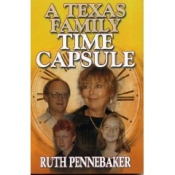I became obsessed with a face in 1994. It was O.J. Simpson’s. I kept peering at it on TV and in the newspapers and magazines, trying to understand.
It was such a nice face — handsome and sweet and gentle. I thought that maybe, if I looked hard enough, I’d find what I was looking for. You know, some traces of cruelty and murderous rage, lurking danger. If I could see that in his face, it would mean two things: first, that I was a good judge of character (and don’t we all flatter ourselves about that?), and second, that faces don’t lie.
The months passed, the damning evidence mounted, and I stopped looking at Simpson’s face with any kind of openness or curiosity. I’d learned to hate him. I knew what he’d done to the mother of his children, even if he was acquitted of her murder. I’d also — finally! — figured out that faces, especially actors’, can lie quite effectively and that I was as gullible as the next person when it came to a pretty facade.
But we all live in a world of faces. They’re part of what we know of other people. I still want to believe that they can tell us something true, even though they can also mislead us — or, as a hack psychiatrist once told me, that we see what we want to see.
Anyway, that’s my excuse about why, almost two decades later, I find myself obsessed with another very different face. It’s Michael Morton’s.
Michael Morton is now famous. You probably know his story. He’s the Central Texas man who was convicted of the murder of his wife in 1987. He was sentenced to life in prison and served 25 years before being exonerated by DNA evidence. (If you want to read the full and compelling account of his ordeal, see this superb, two-part article by Pamela Colloff in Texas Monthly here and here.)
Briefly, Morton was convicted on very little physical evidence. Ken Anderson, the zealous district attorney from Williamson County, fashioned a scenario in which Morton killed his wife in a violent rage of sexual frustration. (Williamson County, which is rigidly conservative, is only 30 miles from Austin; both Austinites and Williamson County residents consider the distance between them to be far greater than mere mileage).
So, Morton was wrongfully in prison for a quarter century. His son, who had been three when his mother was killed, grew up and became estranged from the father he and almost everyone else thought was a murderer. Twenty-five years — as seasons passed and the new millennium came and economies soared and crashed and presidents came and went, and most people led ordinary lives of work and travel and the comforts of home.
Because of Morton’s own persistence and that of the Innocence Project, DNA tests eventually revealed the true murderer — a drifter who had later killed another woman in Austin. At every point, though, the Williamson County authorities fought to prevent further DNA testing with the same zeal they had shown in the original court case.
Worse, Ken Anderson, the prosecutor in Morton’s case, may have deliberately withheld exculpatory evidence from Morton’s defense team. Ken Anderson himself is now on trial to determine whether he broke state laws in failing to disclose evidence favorable to Morton. Michael Morton, the former accused, has testified and now sits in the courtroom as the man who prosecuted him with such enthusiasm is being tried himself.
Every chance I can get, I have searched Morton’s face and listened to his every utterance. I keep looking for anger and bitterness and — hell, yes — hatred. To my continuing astonishment, I find none of that. He looks sad and wistful, occasionally, but most often, his face has a kind glow to it, almost a sweet radiance.
His words are similar. He doesn’t want revenge, he told the judge last week. He believes in accountability, but not vengeance. He urged the judge to be “gentle” with Ken Anderson. Gentle with the man who robbed him of 25 years of his life and his son’s childhood.
And yeah, faces lie and I’m hardly infallible as a witness — but Michael Morton fascinates and humbles me. (Me, the person whose face contorts when somebody cuts her off in traffic or steps on her toe.) How has he managed to drain the fury from himself and forgive so many people who wronged him? He must have realized the anger and bitterness would wreck the remnants of his life — but don’t we all realize that and still manage to cling to the slights and hurts we’ve suffered?
I know, I know — Michael Morton credits the religious conversion he had while in prison for his ability to let go and forgive. But I don’t often see that kind of benevolence and forgiveness in the faces and words of so many others who describe themselves as religious. I see something else entirely — smugness and self-righteousness and harsh judgment of others.
So call me obsessed. Fine. I am. But it’s a wondrous thing to see the face of a good man. When’s the last time you saw someone who moved you so much that you kept thinking, Teach me how to be like you, teach me to live better?
(Copyright 2013 by Ruth Pennebaker)
Read about learning to let go















This is an amazing story which I hadn’t heard about. I would think that 25 years would give you a lot of time to learn to let go and just accept what happens, but I still would find it hard not to be angry.
Well, you know me … I don’t see it often in the faces of people, but I do see it in the faces of dogs. My dog, in particular.
Thank goodness, the Innocence Project is also made up of good people, too.
I did not know the story of Michael Morton. What a horrible murder and miscarriage of justice. The lack of respect and/or remorse by the prosecutor in front of the court is also jaw-dropping.
We often think we can “see” a person by looking at them. In the case of Christopher Dorner in California, I would look at pictures of him and think “how could such a monster look so sweet?” Even monsters were once innocent little babes, loved and adorable. And I have first hand experience of knowing someone who engaged in felony crimes that I was completely unaware of until they were discovered and went to trial. Imagine my surprise! She was a sweet older grandmotherly type. Turned my whole world upside down and made me think a lot about whom to trust.
Wow. What a moving story. What a special man. I fear for him, though, after spending so many years in prison. How can he possibly integrate himself back into society?
In 15 years or so of active prison ministry, I’ve come to know men who’ve committed every kind of crime, including crimes you don’t want to imagine. Men whose crimes were often fueled by rage or frustration or hate, usually at circumstances rather than individuals. Men who find that the weight, the burden, of their rage (not just the burden of the crime) is too great to bear and, through faith found in prison, find a peace that comes only through a faith that is rooted in forgiveness. Forgiving others, yes, but most importantly forgiving self. It is a powerful thing to witness, and I’m confident it is a more powerful thing to experience. Even as a church-going man, the truest Christians I know are locked up.
What a beautiful piece. I could see the light around Morton as you described this. This is so amazing. And yes, I put this in the category of things we know better but somehow can’t come around to. Like, why do we live differently in the face of some dire diagnosis than we do knowing that “someday” we will die? But you have me thinking now. Anyway, thank you for such a lovely piece.
Thanks for bringing additional attention to this man and to raise our awareness. Beautiful…
Thanks for sharing this story–I’d only heard bits and pieces of it. I hope he can now reconnect with his son.
What do we see in the face of a good man? Something to think about. And beautifully written.
I actually hadn’t heard of his story before reading this. How fascinating! I do think people can forgive, but they often have no other choice. If he hadn’t forgiven, then the prosecutor would have also robbed him of his peace of mind. Considering that was all he had left for 25 years, it was worth holding on to.
This struck me through the heart as the left side of my face is partially paralyzed. People often mistake me for a more serious person because my smile doesn’t quite make it there. Don’t judge a book by its cover or a face by its expressions.
Excellent post and observations.
I was also quite taken with this story and how kind this man appeared. You really summed it up well and put all my loose ends into a wonderful perspective. Thanks.
I didn’t know this story, but I’m occasionally humbled by people such as this, who have been wrongly convicted, who don’t seem to harbor ill will for being kept in a cage for years. I’ve seen this in the West Memphis Three as well. Another example are victims of horrible crimes who forgive the criminals who wronged them or took their family members. I would like to think I could, but I don’t think so.
I also had not heard of this story. It’s amazing the number of innocent people who ended up spending decades in prison. Good thing there is an Innocence Project.
What an amazing story. It’s really so unimaginable to me how someone can go through something like that — be wrongfully imprisoned for decades and not be so bitter that you just can’t even function or breathe. I think something else must take over, some sort of Buddhist thing or something. I see that in Damien Echols, one of the West Memphis Three who once faced death row, but was finally released, along with the other two wrongfully imprisoned boys. He doesn’t seem bitter. He seems kind and gentle.
What a terrific post. You are a wonderful writer. I absolutely love your last paragraph. Thank you!